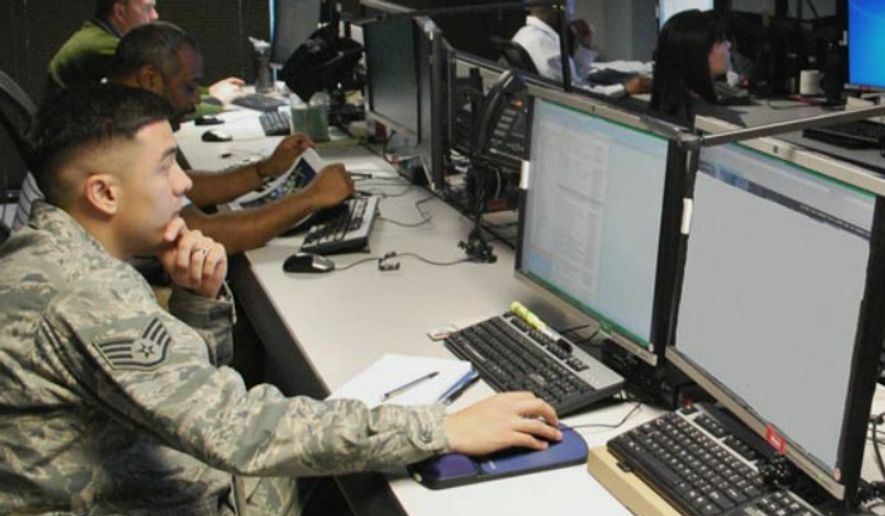A weapon system put in place to protect the computer networks used by the U.S. Air Force has for the first time reached “full operational capability” as the Pentagon attempts to make it harder for hackers to wage attacks against the military’s cyber grid targets.
As of Jan. 6, the Air Force Intranet Control Weapon System (AFINC) is officially up and running — a “major milestone” that’s been several years in the making, the Department of Defense said in a statement.
Even with “weapon system” in its name, military officials say the breakthrough won’t be giving the Pentagon any new abilities with respect to waging offensive attacks on enemy targets. Instead, the AFINC will function as a gateway of sorts through which all Air Force traffic will transverse, acting more akin to a firewall than a missile launcher.
Because it’s classified as a weapon system, however, the Pentagon will be able to manage and budget the Air Force-wide antivirus system unlike any previous efforts intended to harden its network against hack attacks.
Specifically, the Air Force said in a statement that achieving full operational capability means the system is “fully capable to serve as the top-level defensive boundary and entry point for all network traffic into the Air Force Information Network.”
The network used by the branch otherwise has more than 100 different entry points, or “gateways,” through which traffic goes in and out, but putting in place the weapon system consolidates that number down to 16, diminishing the number of possible attack vectors and in turn making it harder for attackers to infiltrate and do damage.
“It allows us to look at the inbound traffic for any kind of computer virus and then block,” Air Force Col. Pamela Woolley, the commander of the 26th Cyberspace Operations Group, told the Wall Street Journal for an article published on Thursday.
“We are definitely not trying to weaponize cyber,” Col. Woolley continued. “This is truly a defensive system to protect the Air Force network,” she said, adding that the AFINC was “literally kind of a fence line.”
With hackers unrelenting in attacks on military targets, however, any measure the Pentagon can put in place to eliminate the odds of a successful intrusion could be imperative. Air Force networks are subjected to “more than one billion firewall, web, and email blocks per week from suspicious and adversarial sources,” the likes of which have increased with sophistication and scope over time, Col. Woolley said in a statement last week.
“The complexity increases every single day,” she told the Wall Street Journal. “We hope to stay up with that complexity and do the best that we can.”
• Andrew Blake can be reached at ablake@washingtontimes.com.




Please read our comment policy before commenting.